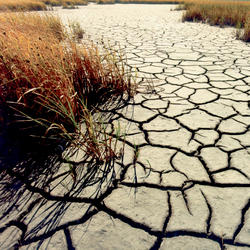Drought Impacts
Drought Impacts
Filter Total Items: 9
Impacts of changing climate and disturbance regimes on forest ecosystem resilience in the Southern Rocky Mountains
Climate-driven forest disturbances, particularly drought-induced tree mortality and large high-severity fires from increasingly warm and dry conditions, are altering forest ecosystems and the ecosystem services society depends on (e.g., water supplies) in the Southern Rockies and across the Western U.S. We will combine unique, long-term place-based ecological data, diverse methods (e.g., paleo...
Drought Prediction Science
Drought is a prolonged and widespread deficit in available water supplies that creates multiple stressors across ecosystems and communities. The U.S. Geological Survey Water Mission Area conducts drought research and modeling to improve drought prediction capabilities. The research focus is on understanding the hydrological, ecological, and economic ramifications of drought. The modeling focus...
Drylands are highly vulnerable to climate and land use changes: what ecosystem changes are in store?
Improper land use during drought has been a major driver of land degradation in drylands globally, especially in the western U.S. Increasing aridity in western U.S. drylands under future climates will exacerbate risks associated with drought and land use decisions. This project provides critical observational, experimental, and modelling evidence to support our DOI partners with decision processes...
Aquifer Compaction due to Groundwater Pumping
Although land subsidence caused by groundwater pumping has caused many negative effects on human civil works for centuries, especially in the highly developed urban or industrialized areas of Europe, the relation between subsidence and groundwater pumpage was not understood or recognized for a long time. Recognition began in 1928 when pioneer researcher O.E. Meinzer of the U.S. Geological Survey...
Climate Variability
To understand changes in our climate, USGS scientists are synthesizing long-term data sets, including geologic records that can extend over millions of years. Paleoclimatology, in particular, uses evidence of past climate change preserved in sediments, rocks, tree rings, corals, ice sheets and other climate archives to reconstruct how climates varied in the past.
By
Dryland Ecosystems
Drylands are arid and semi-arid zones around the world where water resources are scarce. In the U.S., 40 percent of the land is considered dryland. USGS scientists are researching how predicted climate changes in dryland ecosystems--increases in temperature and declines in precipitation--will affect vegetation and wildlife in these areas as well as the ecosystem services they provide.
By
Ecological Drought
Droughts can be defined as meteorological, hydrological, agricultural, and/or ecological. Ecological drought is when below-normal water supplies create multiple stressors across ecosystems. USGS scientists are researching the ecological impacts of drought across the country.
By
Drought Impacts on Fish and Wildlife
Rising temperatures, decreased precipitation, and changes in food sources are having extreme effects on wildlife across our country.
By
Stream Drying
Water in the western United States is disappearing, and several states are facing severe water shortages as drought conditions worsen. Many streams are drying up, and there is growing concern that this trend will only continue as climate change produces warmer and drier conditions. The loss of stream ecosystems has far reaching ecological, social, and economic implications. Species that depend on...
By










